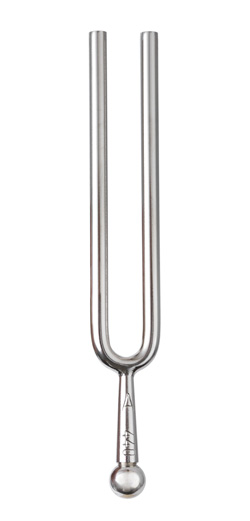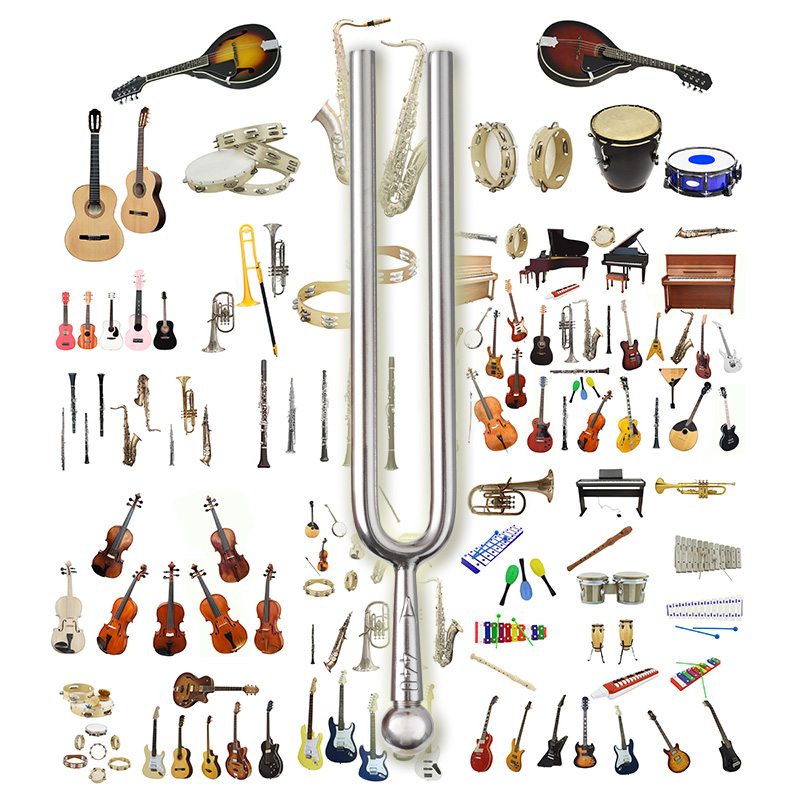Every instrument, from the piano to the guitar to the erhu sounds different. Each has a different tonal colour, or “timbre”, which gives them their own unique characteristic sound. This is how we can naturally tell them apart when listening to music. As you develop as a singer, it is important to listen more analytically to the timbres, and therefore the pitches of different instruments, and how to tune your voice to each of them.
The piano is normally the first port of call when learning how to sing. Many singing teachers use it in the classroom and there thousands of piano ear training apps. The reason is because when you’re first finding your way around the musical notes, the easiest way is by looking at the piano keys. Pitches go visually up and down in steps, and every time you sound the same key on the keyboard (for example an F) it will sound at exactly the same pitch. On other instruments (such as the guitar or wind instruments) this is not always necessarily the case!
Although matching pitch with a piano is a good starting point, as you improve as a singer you will soon be accompanied by other instruments, and you may find yourself encountering pitch and blending problems you never had back with the piano in the classroom. Read on to discover why – and what you can do about it!
Pitches and Frequencies
→ Not sure what a frequency is? Find out here!
Each pitch in the Western scale officially corresponds to one specific frequency, but they were not always the same frequencies we use today. It is difficult to imagine that different notes were used in the past from what we are used to now! But in fact instruments were often tuned for different occasions in different regions. For example, in the 1600s, organs in Germany had an extremely bright sound, using much higher frequencies for different pitches. In England during the same time, it was much lower, in order to depict a darker, more mellow sound on instruments. It was not until the 19th Century that a “scale of equal temperament” was established, meaning that across all the songs you hear, the pitch used for each note will always be the same.
Frequencies and Timbre
This is where things can get a bit more complicated. Timbre is the quality of sound something makes. You can think of it in terms of colour and shape. An oboe, for example, has a very thin, bright timbre. A clarinet has a more rounded tone that’s a bit darker.
As a singer, you should be aware that your timbre is different to every other person’s singing voice, just as your speaking voice is unique. As soon as you pass the beginner stage of learning to sing, pitch is no longer just about how in tune you think you are – it is now also about how in tune other people think you are.
Remember back to when you first began learning how to sing in tune. You would tune up with something like a piano, or another voice, and once you’d grasped the pitches of the key, you would start singing and not adjust your pitches after that. Why would you? If you’re singing in tune you’re singing in tune… right?
 Because of equal temperament, you don’t have to sing an exact frequency every time for the listener’s brain to comprehend what note we are singing. For example, if you were to sing an A4, the exact official frequency is 440 Hertz. But no human is able to sing an A at exactly 440Hz every single time! Not even people with absolute pitch. You might actually sing 435Hz or 443Hz, for example. The nearest notes to an A are A♭ and A♯ respectively. The frequency of A♭ is 415.30Hz, while A♯ is 466.16Hz.
Because of equal temperament, you don’t have to sing an exact frequency every time for the listener’s brain to comprehend what note we are singing. For example, if you were to sing an A4, the exact official frequency is 440 Hertz. But no human is able to sing an A at exactly 440Hz every single time! Not even people with absolute pitch. You might actually sing 435Hz or 443Hz, for example. The nearest notes to an A are A♭ and A♯ respectively. The frequency of A♭ is 415.30Hz, while A♯ is 466.16Hz.
When you think about it, that is a lot of space in between notes!
That’s why our brains can still work out which note you are singing, and there is enough leeway for our brain to think of something as “in tune” even when it’s a little bit above or below the exact frequency.
How does that relate to timbre? Well, timbres can affect the exact frequency you are producing, and as a more advanced singer, it is essential to be aware of your timbre and how it affects the frequency of your pitching. This in turn it affects your tuning when singing with other instruments.
If, for example, you are an alto with a very deep, mellow and round sound, if you sing an E♭4 (311.13Hz), the exact frequency will almost certainly be different from if a soprano with a very bright and clear timbre sang the same note!
Your singing teacher has probably taught you to pay attention to the quality of your voice and your singing “tone”. You might also have explored the different registers of your voice. So you know that you can control the timbre of your voice. Now it’s time to apply that timbre control to make sure you are well “in tune” with any instrument you sing with.
Matching Timbre, Matching Tuning
So you’ve worked out what your overall timbre sounds like. Now it’s time to put it into practice!
Remember that your sense of pitch may feel slightly different to you than it does to other people. Take a look at my article “Learn to Love Your Own Voice” which explains how sound waves partially travel through your skull, which affects how you hear your own voice.
The key point is that your singing voice will sound different to you than to other people. You can learn to compensate for this, and recording yourself is often a useful tool for becoming more objective about your own singing..
When you sing while other instruments are playing, the different timbres can actually affect the pitches being produced. Each instrument may technically be playing “in tune”, but unless their timbres are also well matched, the overall ensemble may still sound poorly tuned.
To start off with, match your pitch to that of instruments with a similar timbre to your voice. If you are playing in a band, then choose a particular instrument to focus on, such as guitars or keyboards. Play around with your vocal colour and try to mimic the instrument. If you are singing with just vocalists, blend your voice in with theirs – again, play around with vocal colour and see how that affects the overall sound and tuning of the overall group.
For more exercises to improve your timbre matching and “blend”, see “How To Achieve Excellent Tone, Balance and Blend in Your Choir” – it’s not just for choirs!
Remember to always listen back to a recording of your performance if you can. There’s always room for improvement, and the more efficient you get at tuning to as many instruments as possible, the more versatile a singer you will become.







